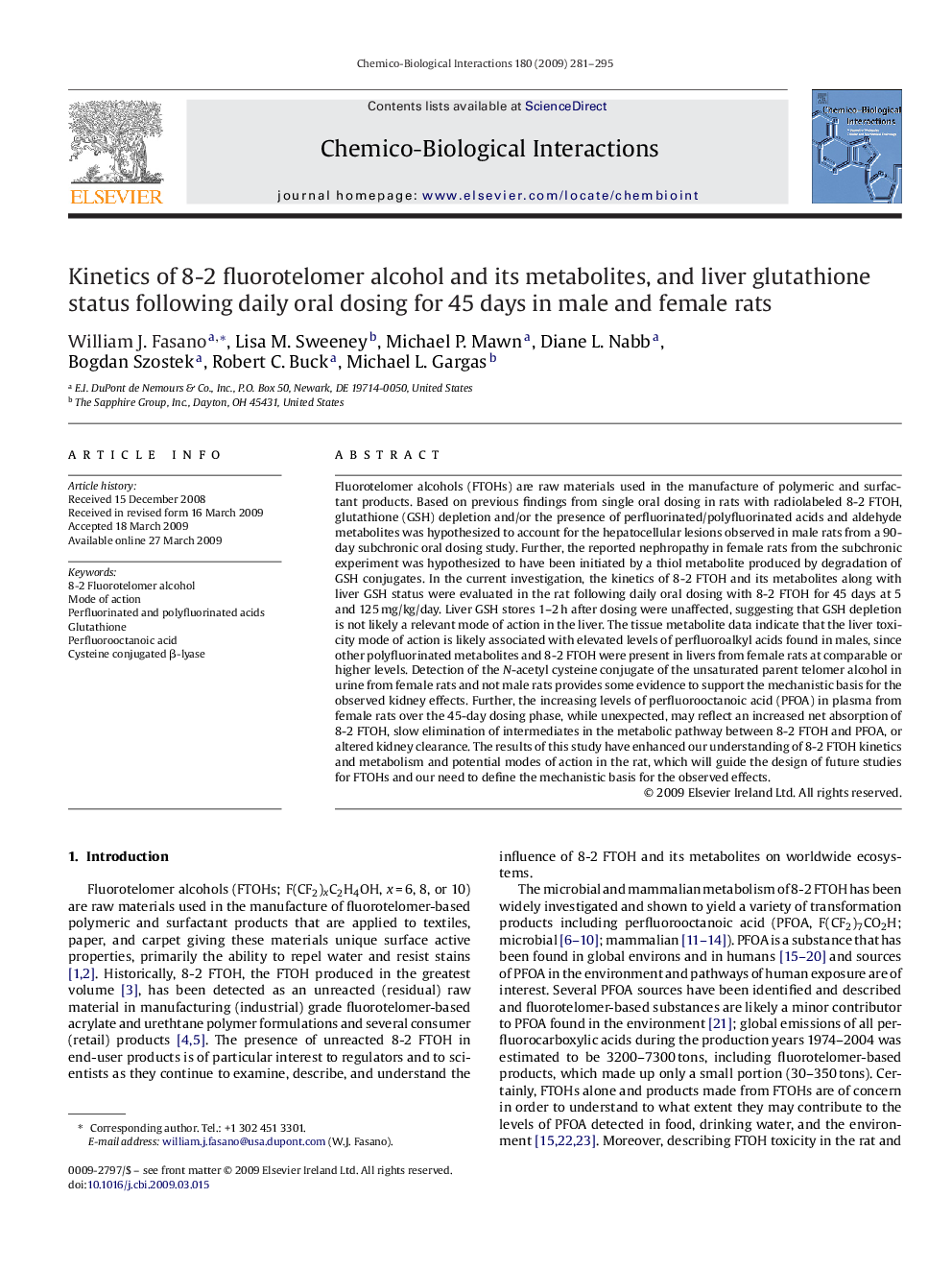| Article ID | Journal | Published Year | Pages | File Type |
|---|---|---|---|---|
| 2582128 | Chemico-Biological Interactions | 2009 | 15 Pages |
Fluorotelomer alcohols (FTOHs) are raw materials used in the manufacture of polymeric and surfactant products. Based on previous findings from single oral dosing in rats with radiolabeled 8-2 FTOH, glutathione (GSH) depletion and/or the presence of perfluorinated/polyfluorinated acids and aldehyde metabolites was hypothesized to account for the hepatocellular lesions observed in male rats from a 90-day subchronic oral dosing study. Further, the reported nephropathy in female rats from the subchronic experiment was hypothesized to have been initiated by a thiol metabolite produced by degradation of GSH conjugates. In the current investigation, the kinetics of 8-2 FTOH and its metabolites along with liver GSH status were evaluated in the rat following daily oral dosing with 8-2 FTOH for 45 days at 5 and 125 mg/kg/day. Liver GSH stores 1–2 h after dosing were unaffected, suggesting that GSH depletion is not likely a relevant mode of action in the liver. The tissue metabolite data indicate that the liver toxicity mode of action is likely associated with elevated levels of perfluoroalkyl acids found in males, since other polyfluorinated metabolites and 8-2 FTOH were present in livers from female rats at comparable or higher levels. Detection of the N-acetyl cysteine conjugate of the unsaturated parent telomer alcohol in urine from female rats and not male rats provides some evidence to support the mechanistic basis for the observed kidney effects. Further, the increasing levels of perfluorooctanoic acid (PFOA) in plasma from female rats over the 45-day dosing phase, while unexpected, may reflect an increased net absorption of 8-2 FTOH, slow elimination of intermediates in the metabolic pathway between 8-2 FTOH and PFOA, or altered kidney clearance. The results of this study have enhanced our understanding of 8-2 FTOH kinetics and metabolism and potential modes of action in the rat, which will guide the design of future studies for FTOHs and our need to define the mechanistic basis for the observed effects.
